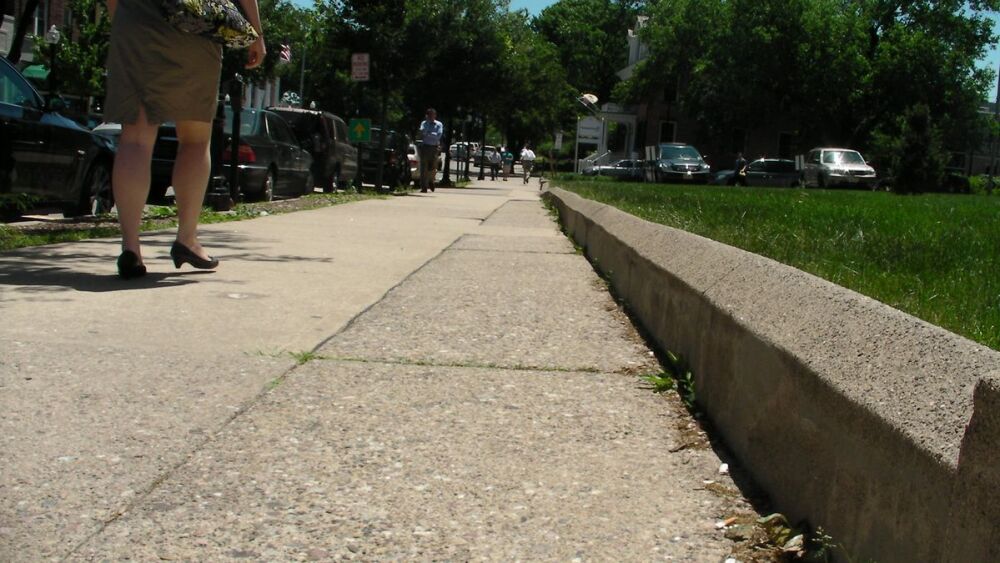Many cities nationwide are experimenting with different materials for constructing sidewalks. The push for modernizing pedestrian pathways comes as cities work to make communities more walkable to attract residents, developments and businesses.
The Goal
Historically, concrete has been the most popular material for making sidewalks. While concrete can last several decades before needing repairs, the material is susceptible to swelling and cracking when tree roots grow underneath. Repairing concrete sidewalks is very expensive, making them a less sustainable option for cities looking to increase pedestrian pathways throughout key neighborhoods.
Modern sidewalks offer communities more than just a concrete path for walking. New sidewalk materials are enabling cities to improve walkability, generate renewable energy, improve public safety and reduce maintenance costs.
One increasingly popular strategy for modernizing the sidewalk is to create the pathways using flexible rubber made of old tires and recycled plastics. The rubberized sidewalks are able to adjust their positioning around growing tree roots so cities spend less on concrete maintenance. Rubberized sidewalks also offer pedestrians with a softer surface to walk on with less gaps to create a tripping hazard.
Santa Monica, California, is one of the first cities in the U.S. to invest in rubberized sidewalks. Starting in 2000, city officials have installed 20,000 square feet of rubber sidewalk at 232 sites across Santa Monica.
Different Projects
Another way to modernize the sidewalk is to make it less vulnerable to inclement weather conditions. In cities where snow and ice are prevalent, heated sidewalks make it easy for residents to use pathways despite cold weather.
Heated sidewalks house a vascular tubing system with heated water that melts surface snow or ice. While these pathways are expensive, they significantly cut down on shoveling demands and hazards of slipping.
Chicago has toted heated sidewalks in select downtown areas dating back to the 1970s, making the technology nothing new. The complexity of heated sidewalks create a high installation cost, which may the reason they are less widespread. More modern heated sidewalks in the Chicagoland area comprise of electric cable installations that use sensors to detect air moisture levels and temperatures. When conditions are right for snowfall or ice, the cables are turned on and the sidewalks are heated.
In the U.K., some sidewalks are comprised of recycled rubber paving tile that converts pressure from walking pedestrians into kinetic electricity. These off-grid power sources can be placed throughout the community where foot traffic is heavy, and generate electricity to power street lamps or other amenities.
George Washington University has installed a solar walk that features walkable solar panels. These installations generate enough energy to power lights along the pathway. In Cambridge, England, sidewalks are being sprayed with a substance to make them glow in the dark. The material absorbs UV light during the day and releases it at night for a green source of lighting along pathways.
Walking the Walk
Gov1 has reported on the rise in cities making pedestrian-friendly amenities a priority as well as experimentation in green transit infrastructure materials.












